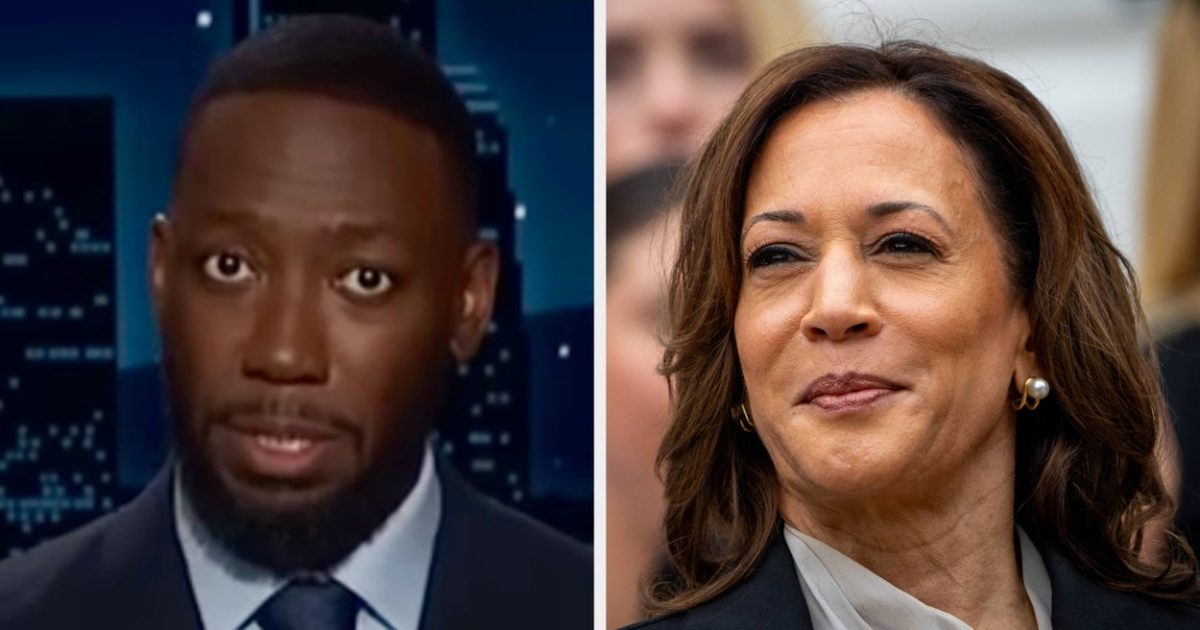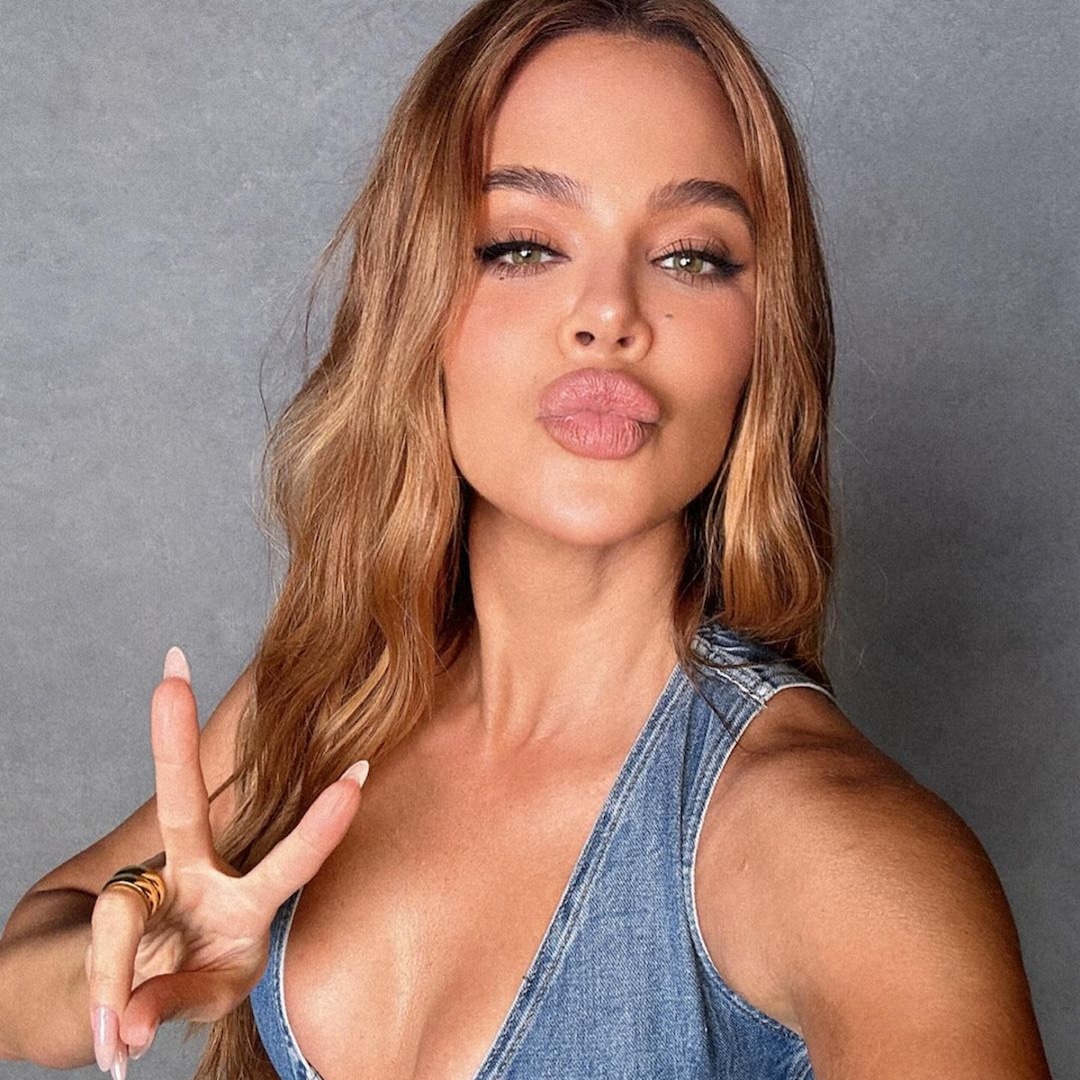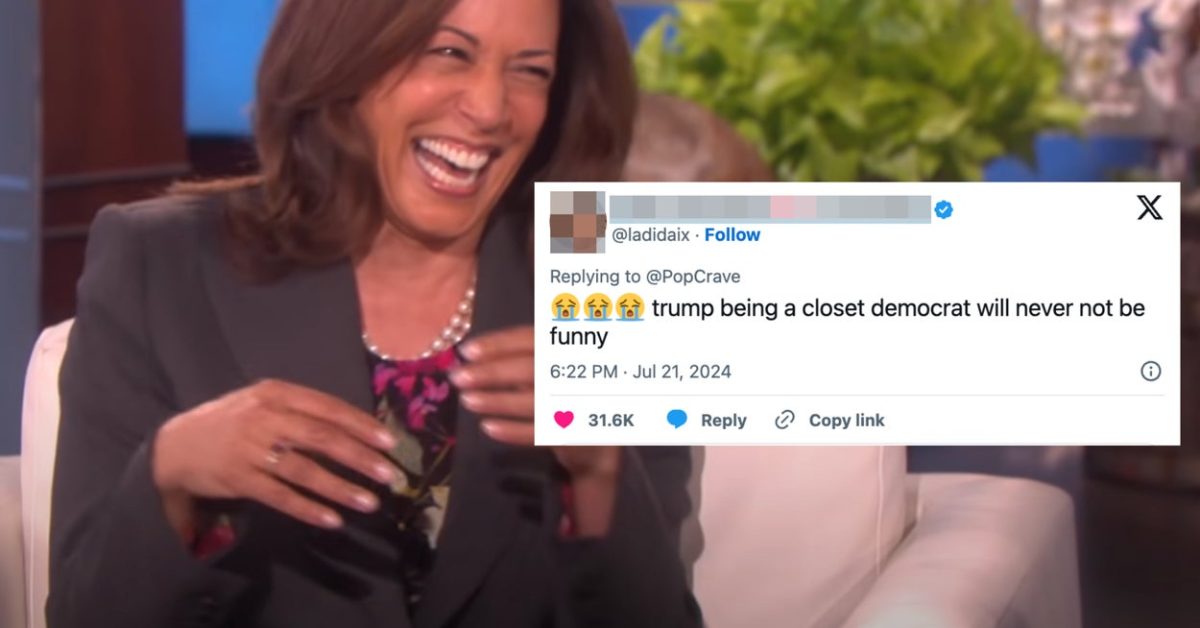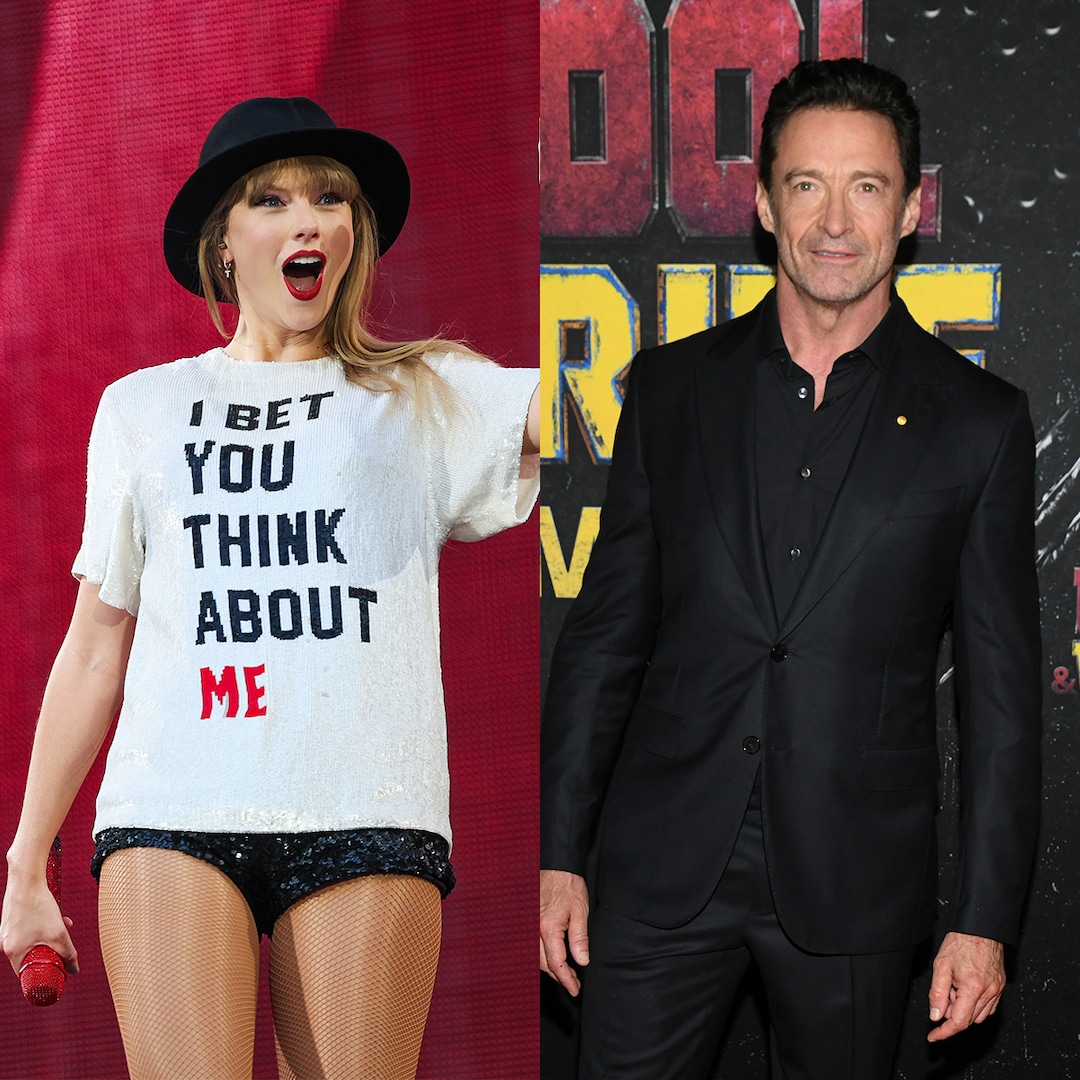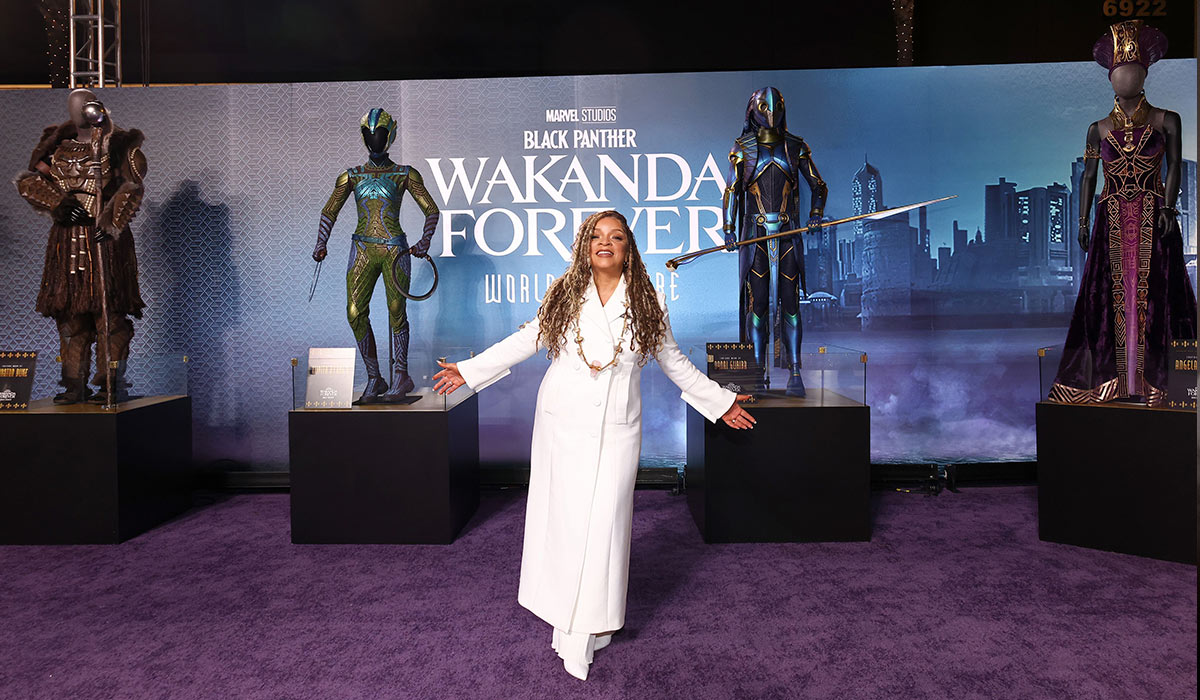
Ruth Carter On Fashioning Namor’s Undersea Costumes
Feb 11, 2023
With a career spanning over three decades, costume designer Ruth Carter has crafted looks for the early 1800s, mid-20th Century America and all aspect of ’90s and early 2000’s Los Angeles (from “B.A.P.S.” to “Love & Basketball”). Her efforts have seen her rewarded with three Oscar nominations for Best Costume Design and a win in 2020 for Ryan Coogler’s “Black Panther.” She revisited that pop culture inflection in “Black Panther: Wakanda Forever” and it was arguably one of the biggest challenges of her career.
READ MORE: “Wakanda Forever’ Review: ‘Black Panther” sequel is overstuffed and yet succeeds with heart, soul, grief and great stakes
Carter and her team had already established the look for the afro futurisitic nation of Wakanda in the first film, but the sequel saw more world building with the introduction of Namor (Tenoch Huerta) and the undersea nation of the water breathing Talokanils. Many of the films scenes take place in the deep ocean, so Carter had to come up with both completely new costumes for a whole slew of characters as well as modify old designs so that wardrobe would work while shooting in a 20-foot tank.
“We could not use the Dora uniforms from ‘Black Panther.’ We had to recreate them all from a mold form and make them out of something that could go underwater. The same with the Jabari,” Carter says. “They have a fur pelt that they wear on their back. I had to submerse that in water and actually come up with a version of the fur pelt that would submerse because a real pelt has a layer of skin. So we used all of these synthetic materials, that looked real, that would actually absorb the water and they would be able to swim. We have a scene where M’Baku [Winston Duke] swims underwater and he sees the Talokanils coming across on the whale. So, all of the warrior costumes were made to go underwater and survive because a lot of the materials that we use to make normal costumes with fabrics and raffia and all that, the water just tears it apart. After one day of being underwater, it’s ruined. Even when it dries, it dries hard like a rock. So we had to come up with other materials to make even some of the same things we saw in the first film in Wakanda so that we could survive it.”
One of the toughest challenges was creating Mayan inspired headdresses for the Talokanils that would work both underwater and on the surface.
“We did tank tests. We had Tenoch Huerta underwater, in the tank, in that feathered serpent headdress, and he held his breath for like two and a half minutes, moving his mouth and turning back and forth and up and down,” Carter reveals. “The buoyancy helped the weight of that piece because it was easily eight pounds. We put all kinds of stuff in the water, and sometimes I was pulling out elements of the water from the costume like, ‘OMG. Back to the drawing board,’ but it was an experience of a lifetime.”
Over the course of our conversation, Carter discusses Coogler’s requests for the new film, what she took from her Mayan and Aztec research, building out Suri’s new Black Panther suit, why she’s excited to work on “Blade” (eventually), and much more.
____
The Playlist: When Ryan started talking to you about the sequel, what was the most important thing to him about the costumes in this particular film?
Ruth Carter: Well, the first thing he told us was that we would be introducing Namor and the underwater world of the Talokanils. We called it, I believe, Atlantis in the beginning. I think he decided to call it the Talokanils based on the Mayan culture and the name that they were given. That was really exciting because I kept thinking of water ballet and costumes in water, so beautiful. I couldn’t wait to go down that road of discovery, and boy oh boy was it a road of discovery. That was the first thing he told us about, and I immediately wanted to come up with images for him to review. I put together a team. The early team consists of illustrators and assistants, and we go into the research and we start realizing how much we had to learn. If we were going to show that they had vibranium, how would that be depicted in their costumes. I felt like we had Wakanda locked down, but then again we didn’t. Ryan said whenever he watches the Batman movies, every time is a little bit different and a little bit more of an upgrade. So, there we go. Here’s the Dora Milaje. As magnificent as that costume is, we were like, “O.K., I got to come up with an upgrade to that armor, and so we created a vertical sheath that goes on the shoulders that articulated as they moved their arms around. Then it was helpful with that for the storytelling because we had Okoye [Danai Gurira], who was a purist and a traditionalist and did not want the new armor. She kept the same armor she had in the first film.
Going back to Namor’s city and people, when you were doing the Mayan research, was there anything that struck you the most? That you thought was key to integrating into their looks?
The ear flares. I had to have all of the figurines. In all of the codices, all of the sculptures, the stone sculptures, that depict the Mayans, and the Aztecs as well, have the jade ear spools. I felt like the costume was not complete until those ear spools were in place. Jade was big. It was something that I felt we had to use in many forms, and so they adorn most of the costumes in some kind of way. Also, the huipil, which was this very simple loomed garment that the Mayans used [in their] clothing. I kind of worked with that horizontal cross-weaving with a lot of the fabrics and materials that were used. Rubber was also manufactured by the Mayans in the beginning of time. 16th century. They had a ball. I was like, “Wow, they had a rubber ball. They could’ve used rubber in all kinds of ways, and that’s going to be helpful to me underwater.” I was not shy about putting silicone into the costumes and just kind of getting that textural feel of this material that is unconventional for what you would think of when you think of the 16th century. Everything, you think, would be made of some other kind of organic matter, but we could use rubber. That was really exciting to me as well.
Some of the actors shot their scenes underwater.
Yeah.
How did that affect your decision on the materials you used on the outfits in general? Were you cognizant of making sure that they weren’t going to be weighed down? Can you talk about the differences in what you would use to make sure that didn’t happen?
How much time do you have? [Laughs.] All these battles were originally fought in the deep ocean, so I had to come up with submersibles for everybody, and then I had to test them in a 20-foot tank. We could not use the Dora uniforms from “Black Panther.” We had to recreate them all from a mold form and make them out of something that could go underwater. The same with the Jabari. They have a fur pelt that they wear on their back. I had to submerse that in water and actually come up with a version of the fur pelt that would submerse because a real pelt has a layer of skin. So we used all of these synthetic materials, that looked real, that would actually absorb the water and they would be able to swim. We have a scene where M’Baku [Winston Duke] swims underwater and he sees the Talokanils coming across on the whale. So, all of the warrior costumes were made to go underwater and survive because a lot of the materials that we use to make normal costumes with fabrics and raffia and all that, the water just tears it apart. After one day of being underwater, it’s ruined. Even when it dries, it dries hard like a rock. So we had to come up with other materials to make even some of the same things we saw in the first film in Wakanda so that we could survive it. For the underwater world, all of that was made to submerge in water. We did tank tests. We had Tenoch Huerta underwater, in the tank, in that feathered serpent headdress, and he held his breath for like two and a half minutes, moving his mouth and turning back and forth and up and down. The buoyancy helped the weight of that piece because it was easily eight pounds. We put all kinds of stuff in the water, and sometimes I was pulling out elements of the water from the costume like, “OMG. Back to the drawing board,” but it was an experience of a lifetime.
For that headdress, Do you use fake feathers? Is it better to use real feathers?
No. We made one that was real feathers. We put it on a stunt diver, and we shot it with real feathers. They were beautiful underwater, and as soon as it came out of the water, it was done. Finito. [Laughs.]
That was it. Never being worn again.
That was it. Never to have that beauty on camera again, but they captured it on camera so they could actually see how they wanted the fins. Then, we made one with silicone kelp that looked like feathers because there are no birds underwater. So we made the kelp look like fish fins, and they were rigid so that visual effects could do their own version of what we showed them. That’s the only thing that survived the water.
Obviously, both Angela Bassett’s and Letitia Wright’s characters go through very emotional arcs in the film. How cognizant were you in how you dressed them in terms of conveying their feelings? Especially Queen Ramonda when she’s at this point where she’s now leading her nation, which she hasn’t before?
Yes. Wow. That speech that [Angela] gives in the first trailer just knocks my socks off. Ryan was very conscious of us not focusing so much on the costume with her or the brightness of color because it was examining her grief. So, I used gray a lot. She wears gray when we first see her. It’s like a plaid dress. It’s got one sleeve exposed. Then, there’s this Hervé Léger, a two-piece that she lays on the table in. It’s a somber mood. Even though the clothing has her personality, her techno voice of being this genius in technology is something that she couldn’t ignore. She couldn’t all of sudden just come to the lab in her pajamas. Maybe she could’ve come in her pajamas, but it had to have that layer of protection in the lab. You had to feel like there was something special there. So I kept that, but I kept the colors to either gray or white. There’s one time where she wears an orange turtleneck under a protective layer, the white-mesh protective layer, but she’s a lab rat. She’s always in the lab. Then, when Ramonda takes her out into the bush, she’s still kind of lab-y and techno. It’s not until the end, after she even becomes the Black Panther, that we see her in Haiti and she’s just let it all go. She’s got cutoff shorts and a blue hoodie, and you really connect to her humanity. It’s a really beautiful story for her.
Ramonda, I wanted to just display the power of women, and how she wears the one-shoulder dress that exposes her arm. That was a symbol of womanhood and complicated, exposed, vulnerable. The Dora Milaje wear one sleeve out when they’re carrying the casket, and it’s also representing the power of these women and the nakedness of the vulnerability of their grief. Shuri is introduced into the film the same way with one sleeve gone like one part of them has just been stripped away, and I like that exposure of that one side of them.
There is a funeral procession at the beginning of the film. What was your inspiration in that case?
I had to stick to the tribes. This is a real thing that’s being carried out in a movie that’s supposed to be fictitious, but it’s actually a real thing, and so approaching it is very emotional. You want to bring the tribes. I’ve got the Zulu, and I’m going to make them white. I’ve got the Ndebele. I’m going to make them white. I’ve got all of the tribes from all over Africa coming together to honor this man’s ascension. It was emotional. It was more emotional shooting that scene than what you saw in the film. I was so hopeful that everyone who came to see “Wakanda Forever” would connect to that moment of saying farewell to the King of Wakanda. We wore white to connect, but there was nothing like the connection on the day of shooting. There was nothing like it.
Obviously, Shuri takes over the mantle of the Black Panther, and she has her own Black Panther outfit. How did you change it compared to the original outfit Chadwick Boseman wore in the first film?
Well, it was gone over with Marvel’s design team, led by Ryan Meinerding, and they’re serious about their super suits. It does have a lot of meaning of Africa and superpowers and stuff. Ryan brought in the gold. That was Ryan Coogler’s contribution. Then, once I got it, I had to make decisions on the fabrication. We went through the same process that we did with T’Challa’s Panther suit. It has the Okavango triangle all over, but the jewelry of the suit, and that is those gold-and-silver striations around the suit, really did have a brilliance like jewelry. They were adjusted on the suit so that we could actually see Shuri’s form. We could actually not go so far away from her actual form as a princess, as a girl, as a woman. It wasn’t trying to be a man’s suit. It was the Panther suit for Shuri. We know that she was the designer of T’Challa’s new suit, and she explained to him, “This is boring. Oh, wait. Let me put my helmet on,” that she would have brought into accepting this new role and this new suit as something that she would make all her own. That’s what the suit feels like to me. It is her suit.
I know you were supposed to work on “Blade” and production got pushed. I’m assuming you’re not working on it now. You guys have stopped, right?
Yeah, we’ve stopped.
Can I ask what you’re working on now? Are you just sort of waiting in the wings?
Waiting in the wings. There’s a lot of work to introducing Blade as a part of the Marvel Cinematic Universe, and I’m anxious to continue it and show a whole nother Blade to the world.
You’ve worked on so many varied types of films over your career. What made you want to do “Blade” after going through “Black Panther”? What about working with Marvel excites you?
I think that they like the production value. They are O.K. with me taking a deep dive, and I like that. I like being a part of a world-building experience, and they are happy to let me do it. I like the support that I have as an artist; that I get to do 3D printing. I get to work with some of the most incredible artisans that are a part of, also, a lot of the Marvel films. It doesn’t make it easier, it’s still very hard work, but it does challenge your artistic vision, and the layers that are required to get some of these super suits done were a huge learning experience for me. That, as a costume designer takes us into a new realm. It does really display costume design in many other forms than I had experienced in the past, but I still like the simple things too.
“Black Panther: Wakanda Forever” is now playing nationwide
Publisher: Source link
Lamorne Morris Thinks Kamala Harris Has This Advantage Over Donald Trump
Trump said that President Joe Biden, who dropped out of the race on Sunday while recovering from COVID-19, never really had the infection. “Really? Trump thinks Biden never had COVID?” Morris said on Monday. “You don’t pretend to have COVID to get out…
Jul 26, 2024
Khloe Kardashian Is Ranked No. 7 in the World for Aging Slowly
Khloe Kardashian's body is out for more than just revenge. In fact, the 40-year-old is one of the world's slowest agers—a revelation she learned after taking a blood test to determine her body's biological age compared to her calendar age.…
Jul 26, 2024
Reactions To Trump’s Kamala Harris Donation
Just as many white Americans used their Obama vote to excuse their internalized racism, Lauren Boebert seems to have adopted this same ideology, ignoring Trump's long record of racism against African Americans, Mexicans, Hispanics, Native Americans, Muslims, Jews, and immigrants, and discrimination against women and…
Jul 25, 2024
Hugh Jackman Reveals What an NFL Game With Taylor Swift Is Really Like
Hugh Jackman is happy to fill any blank space in Taylor Swift’s NFL game suite. In fact, the Deadpool & Wolverine star recently detailed his experience attending a Kansas City Chiefs game to root on Travis Kelce, alongside Ryan Reynolds,…
Jul 25, 2024








